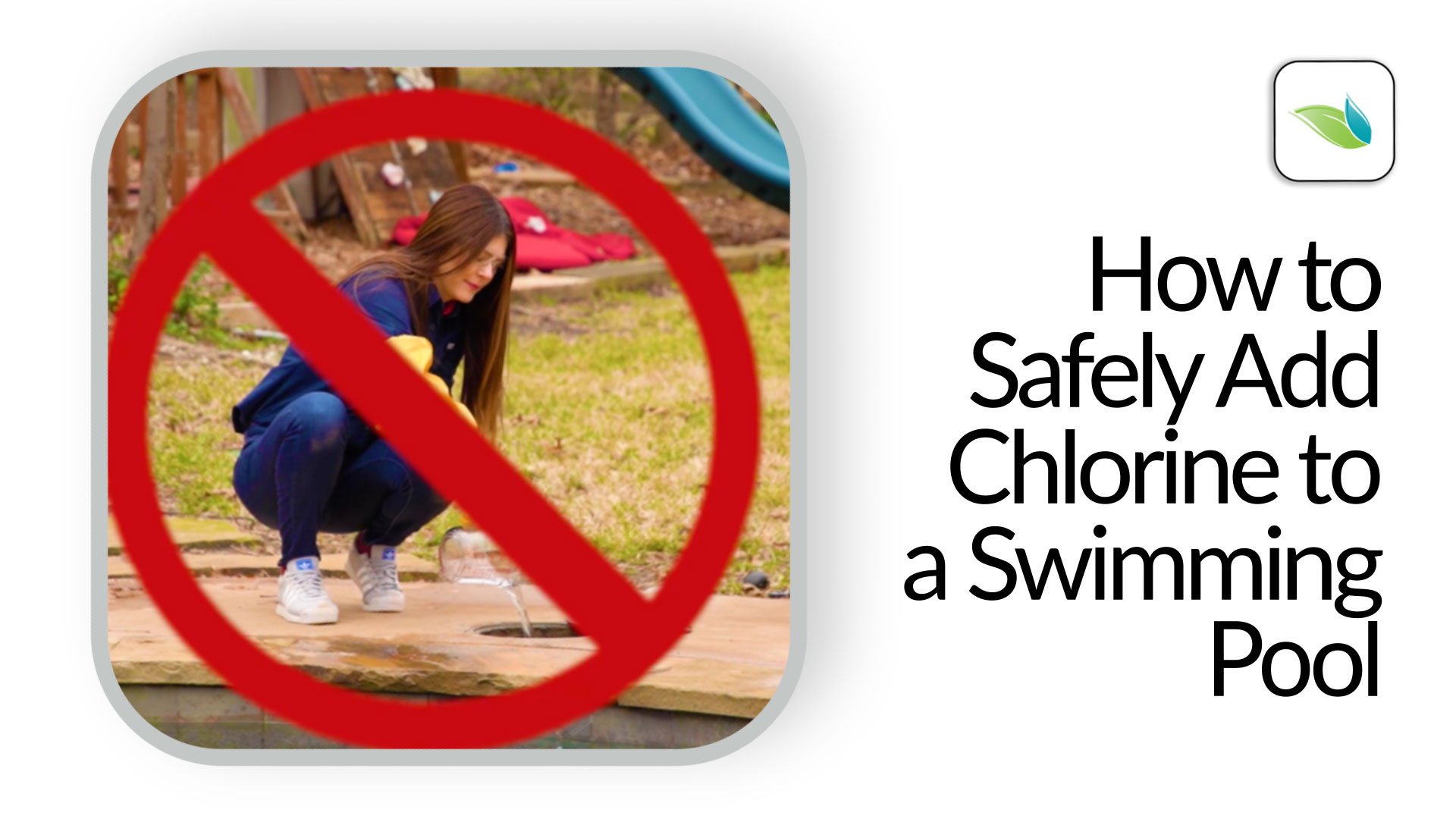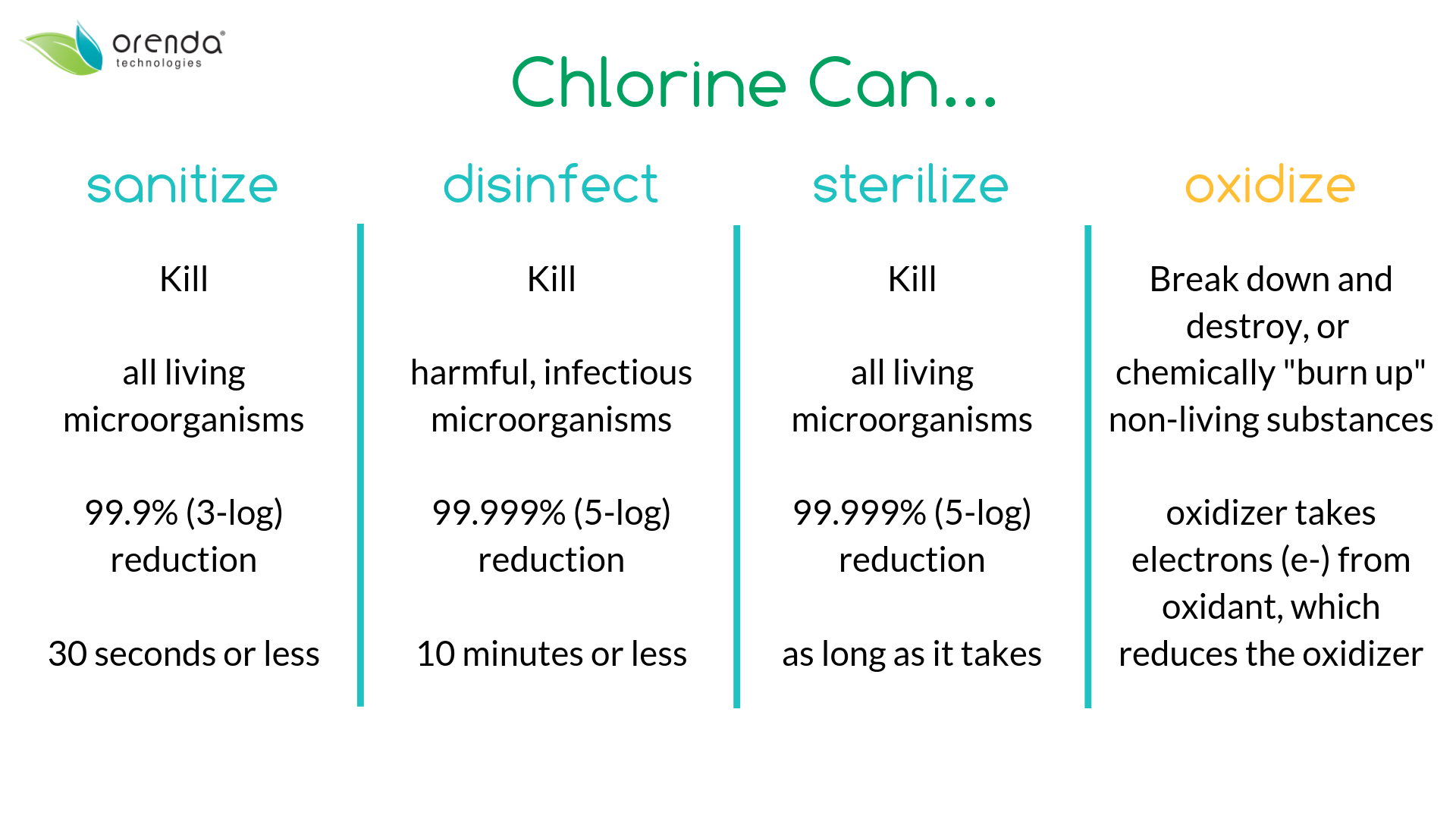How to Safely Add Chlorine to a Swimming Pool

Chlorine is the most popular pool sanitizer. Its responsibilities include sanitization, disinfection and oxidation. Needless to say, having a good residual of free chlorine is essential to having a healthy and safe pool to swim in. This article will explain how to add various types of chlorine to your swimming pool. Let's get started.
First and foremost, a word of caution. NEVER mix different types of chlorine together. Even storing them near each other can be dangerous. Chlorine is a volatile oxidizer and when mixed with other types of chlorine, it can be deadly. Always use protective gloves and glasses, and use caution. In fact, as a rule of thumb, NEVER mix chlorine directly with anything else.
Chlorine's Responsibilities 
We need chlorine in our water to handle both living and non-living contaminants. Granted, there are far more non-living contaminants (like Organic Waste) than there are living contaminants (like algae or bacteria). That said, the most important responsibility of chlorine is to kill germs and harmful microorganisms. Too often it is burdened by the oxidant demand. Not just bather waste, but other oxidants like metals, nitrogen compounds, etc. These oxidants reduce chlorine, making it even more important for chlorine to be added regularly to a swimming pool.
Related: Organic Waste and Carbon Management (Pillar 2)
This is why we recommend supplementing chlorine with enzymes and a secondary oxidation or sanitization system (like UV or Ozone). As you know, our company manufactures enzymes, and we have written quite a bit about what they are and how they work. To learn more about enzymes, here are some articles for you:
- Why we treat water with Enzymes
- World Class Water Clarity
- Understanding Breakpoint Chlorination
- Understanding ORP: Oxidation Reduction Potential
- Pool Water Chemistry, Part 1: Sanitization
- How Orenda Enzymes Actually Work
Ideally, we have enough free available chlorine to stay ahead of the growth and reproductive rate of any living contaminant, plus a residual to overcome non-living oxidants. The threshold in which chlorine has overcome its demand and can begin building a residual is called the breakpoint.
We could go on and on about the chemistry of chlorination, and even open up the can of worms about Cyanuric Acid stabilizer and its impact. But instead, let's just get to the procedure of how to add chlorine to a swimming pool.
How to Add Dry Chlorine
Granular Chlorine
The procedure for adding granular chlorine is pretty much the same as adding calcium chloride or sodium bicarb to a pool. Measure the dry chemical, pre-dissolve in a bucket, and pour around the perimeter of the pool (never into the skimmer directly).
There are a few types of dry, granular chlorine. These are primarily used as a shock, because of how rapidly they dissolve in water. There is calcium hypochlorite (cal hypo), dichlor and trichlor.
NEVER mix different types of chlorine together!
You will need:
- A reliable test kit that measures alkalinity and pH
- A 5-gallon plastic bucket
- Safety equipment - glasses and gloves
- Something to stir with - like a wooden paint-stirring stick
- Sodium Bicarbonate or Soda Ash - The Orenda App displays both
- A dry measuring cup or bucket - dose properly. Don't cut corners.
Step 1
Test your pool water and your fill water for free available chlorine. Record results. The Orenda app will tell you exactly how much granular cal hypo you need, but does not include dosage for stabilized chlorines like dichlor and trichlor. This was by design, and it means you will need to figure out the dosage on your own. Bring the granular chlorine of choice to the pool with the other items listed above.
Step 2
Dip the bucket into the pool until it is about 3/4ths full of water. Slowly pour the measured amount of chlorine into the bucket.
Step 3
Stir until the powder is completely dissolved. Pouring undissolved chlorine into the pool can cause cloudiness, but more importantly, depending on the pH of the chlorine itself, it can affect your surface. Always pre-dilute.
Step 4
Slowly pour the completely dissolved solution into the pool. Maybe do about half the bucket, then let fresh pool water into the bucket, and stir again, and slowly pour again. Use your best judgement. Do NOT pour the solution directly into the skimmer. Add it around the perimeter of the pool.
Tablet Chlorine
Cal Hypo and Trichlor are also available in pressed tablet form, or briquettes. These tabs usually require a specialized feeder system that regulates how fast they dissolve, and introduces the dissolved chlorine into circulation. NEVER put the wrong type of chlorine in a feeder. It is extremely dangerous and can even cause an explosion. Literally.
Trichlor tabs are very acidic (pH ~2.8) and should never be placed in skimmer baskets. For that matter, no chlorine should be added directly into a skimmer. Additionally, we at Orenda strongly recommend against the use of chlorine floaters; especially kid-friendly ones that look like toys. Chlorine is a strong chemical that can cause children harm if they grab onto a floater. If you do have a floater in your pool, remove it when bathers are in the water.
How to Add Liquid Chlorine
Liquid chlorine (sodium hypochlorite) is a much easier and self-explanatory procedure. You can use the Orenda app to figure out the exact dose you need, in fluid ounces. Measure and pour around the perimeter of the pool, or on top of a return inlet that is pumping water back into the pool. Wear protective safety gear, and be cautious...bleach can ruin clothing, and your day.
Conclusion
So whether you're a first-time pool owner, or an experienced professional, these are the best practices for safely adding chlorine to a swimming pool.
How To's
For more how-to information, check out our other articles and videos:
